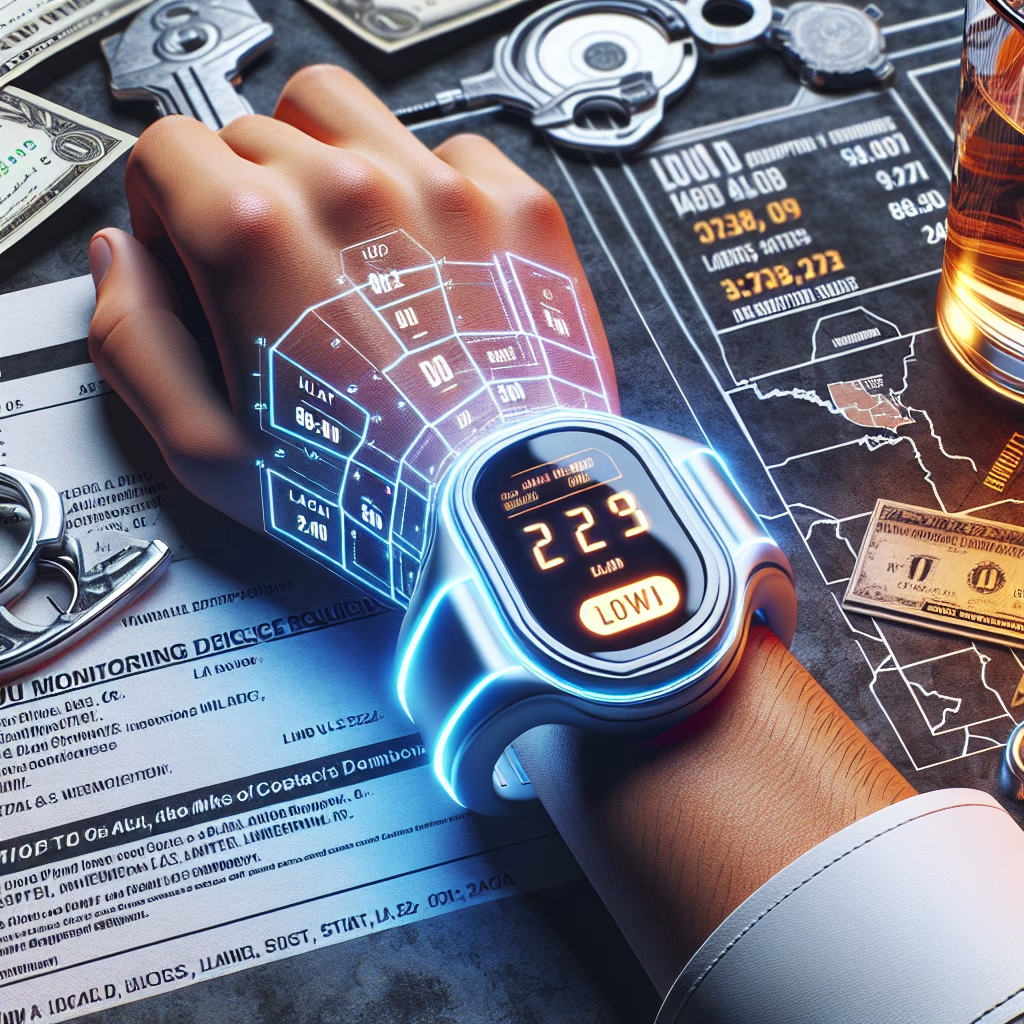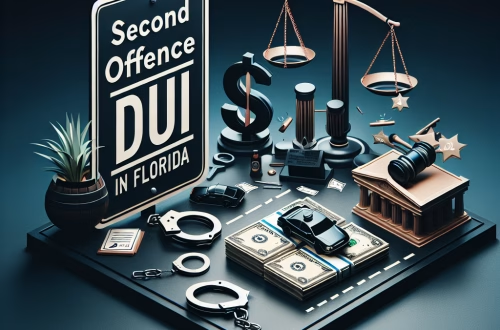DUI Monitoring Device Requirements
Summary:
DUI monitoring device requirements carry severe immediate and long-term consequences for drivers across the United States. These court-ordered interventions directly impact employment opportunities, insurance rates, and personal freedom, with non-compliance triggering additional criminal charges. Primarily affecting individuals with DUIs involving high BAC levels (.15%+), repeat offenses, or aggravated circumstances, these requirements present unique challenges including installation costs ($70-$150/month), calibration logistics, and potential device malfunctions that could result in false violations. Legal battles often center on the constitutionality of continuous alcohol monitoring and the accuracy of ignition interlock devices.
What This Means for You:
- Immediate Action: Request a DMV administrative hearing within 10 days of arrest to preserve driving privileges (per California Vehicle Code §13558). Simultaneously file a motion to stay monitoring device installation pending criminal trial outcome.
- Legal Risks: Mandatory IID installation periods range from 6 months (first offense) to 3+ years (felony DUI). Violations trigger 30-day license suspensions (CA Veh Code §13386) and potential probation revocation. Commercial drivers face CDL disqualification under 49 CFR §383.51.
- Financial Impact: Expect $900-$2,500 annually for IID lease/fees, $125 DMV reinstatement fee, $500+ insurance surcharges, plus $2,000-$10,000 in court fines. SCRAM ankle monitors cost $300-$500/month with daily calibration fees.
- Long-Term Strategy: Petition for early IID removal after compliant period (varies by state). Explore expungement eligibility 3-5 years post-sentencing. Maintain verifiable sobriety documentation for future employment/housing applications.
Explained: DUI Monitoring Device Requirements:
Under state laws like California Vehicle Code §23575 and federal guidelines (23 USC §164), DUI monitoring devices are court-ordered mechanisms to enforce sobriety. Ignition Interlock Devices (IIDs) prevent vehicle operation with BAC ≥0.025% despite state DUI thresholds being 0.08%. Continuous Alcohol Monitoring (CAM) systems like SCRAM transdermal devices test for alcohol every 30 minutes. Federal mandates require states to implement IID programs for all convicted drunk drivers to receive full highway funding.
Monitoring requirements apply post-conviction and may be imposed pre-trial as bail conditions in felony DUI cases. Interstate Compact rules (49 CFR §384) ensure reciprocity – an IID ordered in California must be installed when relocating to Arizona. The National Highway Traffic Safety Administration (NHTSA) maintains model specifications for device certification.
Types of DUI Offenses Requiring Monitoring Devices:
First-time DUI offenders face mandatory IIDs in 34 states when BAC exceeds enhanced thresholds (typically 0.15%+). California requires 6-month installation for all convictions under VC §23575. Commercial drivers require IIDs for any DUI conviction at 0.04% BAC per FMCSA regulations. Felony DUI offenders often receive combined monitoring – SCRAM during probation plus 5-year IID post-release under VC §23575.5.
Alternative monitoring systems include GPS-alcohol combo units for DUI with child endangerment charges, and home breathalyzers connected to probation departments. Zero-tolerance states mandate lifetime IIDs for third convictions, while diversion programs may reduce requirements contingent on treatment compliance.
Common Defences for DUI Monitoring Device Violations:
Challenging improper calibration records forms the cornerstone of defense. IID providers must maintain NHTSA-compliant calibration logs – missing documentation invalidates alleged violations under People v. Hall (2017). Malfunction evidence through temperature/humidity sensor data can disprove false positives. “Rising BAC” defenses argue post-driving alcohol consumption when devices activate during mandated retests.
Fourth Amendment challenges apply to warrantless CAM data extraction. State v. Niemczyk (Ohio 2019) suppressed SCRAM results when probation officers accessed data without reasonable suspicion. Medical conditions producing false ethanol signatures (diabetes, ketosis) provide biological defenses, requiring expert testimony to demonstrate metabolic interference.
Penalties and Consequences of Non-Compliance:
Violating IID requirements extends installation periods by six months per incident (CA Veh Code §13386). Tampering charges carry mandatory 60-day jail sentences (VC §23247). Each failed breath test generates a probation violation report, potentially converting suspended sentences to active jail time.
Financial penalties escalate rapidly – $200/data violation fines plus $250 DMV service fees for recalibrations. Insurance companies legally deny coverage after multiple violations (CA Ins Code §488), forcing high-risk pool enrollment at triple premiums. Professional license suspensions (medical, legal) automatically trigger after two reported violations in most states.
The DUI Legal Process and Monitoring Requirements:
Post-arrest, two parallel proceedings commence: 1) DMV administrative hearings within 10 days addressing license suspension and provisional IID permits; 2) Criminal arraignment where prosecutors file formal charges. Pre-trial motions often contest the necessity of pre-conviction monitoring devices.
At sentencing, courts impose device requirements as probation conditions – standard terms mandate: 24/7 CAM systems for high-risk offenders, IID installation verified within 30 days (VC §13386), and monthly calibration reports submitted to probation. Violation hearings occur within 14 days of alleged infractions, requiring prosecutors to prove willful circumvention beyond reasonable doubt.
Choosing a DUI Attorney:
Select attorneys certified in NHTSA Standardized Field Sobriety Testing with IID manufacturer-specific training. Top practitioners maintain relationships with device technicians who testify about maintenance records. Local court experience proves critical – Los Angeles County requires different defense strategies than rural jurisdictions regarding monitoring device discretionary applications.
Fee structures should include flat rates covering: DMV hearing representation, pre-trial motions contesting device orders, and full violation defense. Avoid attorneys lacking private forensic toxicologists for challenging SCRAM results. Verify recent case outcomes through state bar portals – successful attorneys achieve at least 40% reduction in mandated monitoring periods.
Other DUI Resources:
The National Highway Traffic Safety Administration publishes guidelines for state interlock programs: NHTSA.gov. California DMV provides IID compliance requirements at CA DMV.
People Also Ask:
How long do I need an Ignition Interlock Device after a DUI?
Mandatory periods vary: 6 months for first offenses in California, 2 years for BAC ≥0.15%, and up to lifetime requirements for third convictions in states like Arizona. Early removal requires complete violation-free periods plus DMV approval after final hearing.
Can monitoring devices give false positives?
Yes – common culprits include hand sanitizers triggering IIDs, perfume/alcohol-based products affecting SCRAM sensors, and electromagnetic interference disrupting GPS units. Documented technical malfunctions occur in 12-15% of devices according to NHTSA studies.
What happens if you get a DUI in another state with an IID?
Interstate Driver License Compact requires reciprocal enforcement – California will impose identical penalties for out-of-state violations per VC §15023. Moving states requires transferring monitoring contracts to approved vendors in the new jurisdiction within 30 days.
Who pays for DUI monitoring devices?
Offenders bear all costs: installation ($100-$150), monthly leasing ($70-$120), calibration ($50/month), and removal fees ($50-$100). Some courts offer income-based subsidies – California’s Indigent Program reduces costs by 60% for eligible participants.
Can monitoring requirements be expunged?
Device orders remain on driving records permanently in most states, though DUI convictions can potentially be expunged after probation. Successful expungement eliminates public access to records but preserves DMV monitoring histories.
Expert Opinion:
Proactively addressing monitoring device requirements within statutory deadlines substantially improves case outcomes. Specialized legal counsel proves essential for navigating the technical evidentiary challenges inherent in violation proceedings and minimizing long-term collateral consequences that persist beyond formal sentencing terms.
Key Terms:
- State DUI interlock device laws
- Ignition Interlock Device violations and penalties
- Continuous Alcohol Monitoring compliance
- DUI monitoring device cost estimators
- SCRAM ankle monitor false positives
- Interstate DUI device reciprocity agreements
- Calibration requirements for ignition interlocks
*featured image sourced by Pixabay.com





